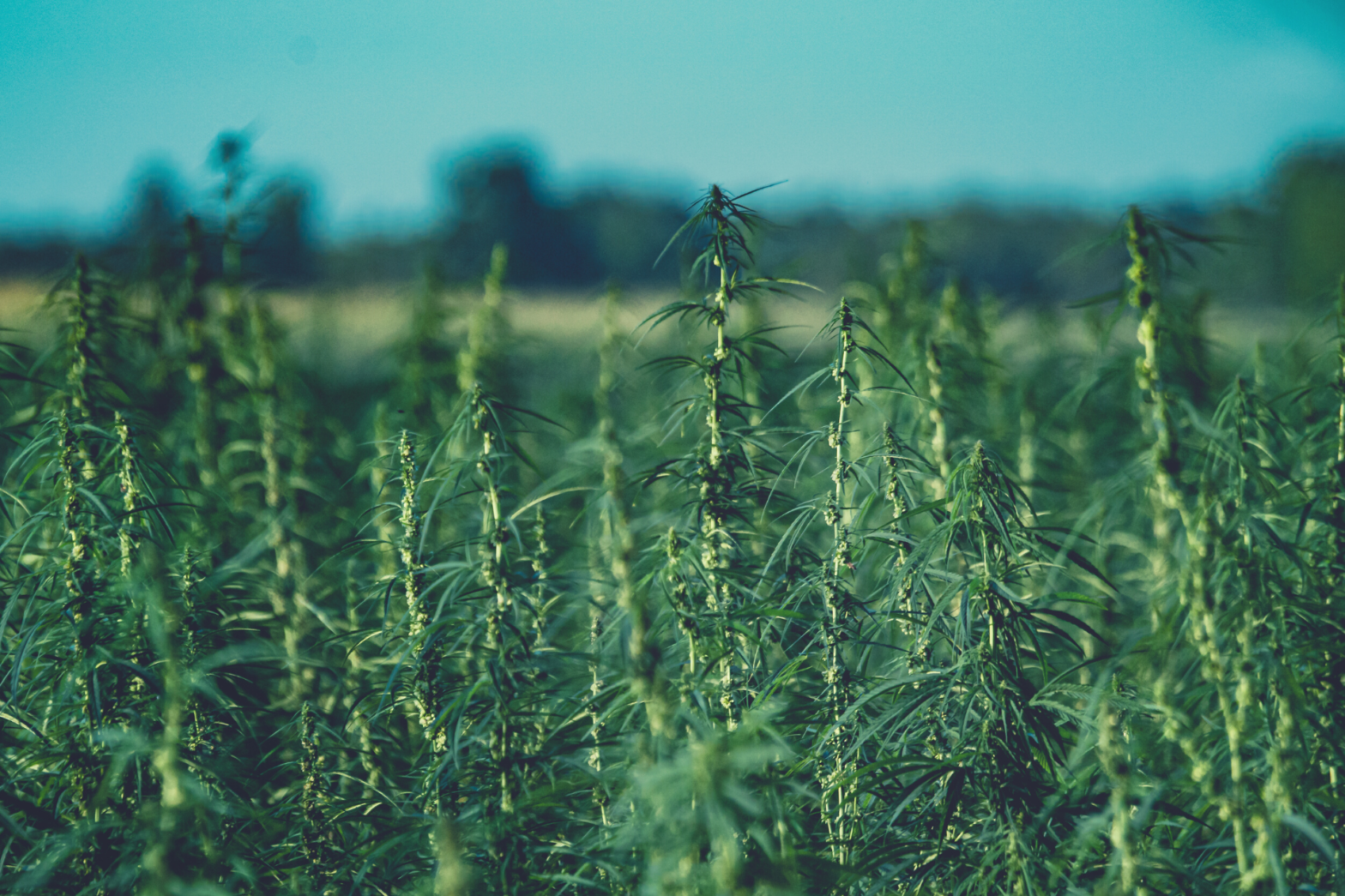In 2019, the world’s leading climate scientists warned that we have only 11 years left to prevent irreversible damage from climate change. Big headline solutions to our impending climate crisis often include switching from fossil fuels to renewable energy, improving our disastrous industrialized farming practices, limiting deforestation, and restoring our ecosystems–all of which seem like an impossible feat. But what if all of these could be solved with one plant?
Hemp, a non-psychoactive variety of the Cannabis sativa plant, has numerous properties that make it environmentally friendly and sustainable. This miracle botanical extracts contaminants from the soil captures atmospheric carbon twice as effectively as forests, enhances soil fertility, prevents deforestation, and provides us with sustainable materials that we can use in all sorts of applications.
Hemp products can be used as environmentally friendly alternatives to everyday items (including single-use plastics) that would typically end up in landfills. Products made of hemp fiber can be reused, recycled, and composted. They’re also 100% biodegradable.
The bottom line: Hemp could help humanity toward a sustainable world. With thousands upon thousands of possible uses, a sustainable hemp industry could do wonders for the environment.
Here are just a few more reasons why hemp might hold the key to saving the planet:
Hemp Keeps Nature in Harmony
Many modern crops require heavy use of synthetic pesticides, fungicides, and herbicides, which can be highly detrimental to biodiversity. On the other hand, hemp can be grown without herbicides, pesticides, or fungicides. It’s also suitable for cultivation near surface water. Hemp has been cited as one of the top 5 crops for biodiversity friendliness, performing better than all major crops such as wheat, corn, soy, or tobacco.
Reduces Carbon Dioxide in the Air
Carbon sequestration is the process of capturing and storing atmospheric carbon dioxide. In this arena, hemp is an absolute superstar. It’s even widely considered one of the fastest CO2-to-biomass conversion tools available and for a good reason. One acre of industrial hemp can absorb at least 16 tons of CO2 per acre each year. The average carbon footprint for a person in the United States is 16 tons, one of the highest rates in the world (the average carbon footprint globally is closer to 4 tons). This means that just one acre of hemp could offset one person’s entire carbon footprint for the year! Plus, it’s possible to yield two hemp harvests each year so that CO2 absorption can be doubled.
Restores Soil Health
Thanks to its vigorous growth, hemp is known to be a plant that can be used to restore the land. It’s also effective in cleaning soil polluted by heavy metals (a process known as phytoremediation).
Provides Eco-Friendly Materials
Hemp cultivation eliminates the need for petroleum-based plastics, paper products made from trees, environmentally harmful fabrics and textiles, destructive building materials (like concrete), and so much more.
Supports Sustainable Farming Practices
Hemp is resilient and proliferates. In fact, it’s one of the fastest-growing plants in the world. Within just a few weeks after planting, the crop will be several feet high. As hemp grows, it readily captures and stores greenhouse gasses and crowds out weeds. When implemented in a crop rotation, hemp can significantly benefit farmers. Hemp prevents soil erosion and compaction. It also helps keep the soil nutrient-rich and increases the overall yield.
With all of these benefits, it’s no surprise that humans and hemp have a relationship that dates back millennia.
Brainwave: Hemp Coevolved with Humans
With evidence of its use recorded throughout human history, including the recent discovery of 29,000-year-old hemp rope in modern-day Czechoslovakia, many believe hemp was the first crop ever cultivated by humankind.
And it’s really not hard to see why hemp has always been such an essential part of our lives and culture; it has overwhelmingly beneficial properties. Its fibers can be turned into many different materials. Its nutrient-dense seeds can be eaten, and its flowers can be used for medicinal purposes, spiritual practices, and recreation.
The cannabis plant is a critical element in what Dr. Sunil K. Aggarwal calls humankind’s “evolutionary garden,” the collection of plants, fungi, and animal secretions that humans have cultivated since prehistory and carried around the world because of their usefulness for human health and survival as food, medicine, clothing, or other vital supplies. Aggarwal is a physician-scientist, medical geographer, and co-founder of Seattle’s Advanced Integrative Medical Science (AIMS) Institute. In 2013, he published one of the foundational articles on the human-cannabis relationship, “‘Tis in our nature: taking the human-cannabis relationship seriously in health science and public policy,” in the medical journal Frontiers in Psychiatry.
So, we now know that humans have embraced the versatility of this plant for thousands of years. Hemp remained a major farming commodity in the United States up until the 19th century. And then came the Marihuana Tax Act of 1937 (also referred to as the 1937 Marijuana Tax Act), which essentially prohibited hemp cultivation through excessive taxation––but that’s a story for another time. After many decades and a massive effort from hemp farmers, the big breakthrough was the passage of the 2018 Farm Bill. Today, hemp is a legal commodity and is widely recognized as one of the world’s most ecological crops.
Where Can Hemp Grow?
Hemp is a versatile plant that can grow in various climates and soil types. It’s typically grown in temperate regions but can also adapt to different environments. Hemp requires a frost-free growing season of about 90-120 days and prefers temperatures between 60 and 80 degrees Fahrenheit (15-27 degrees Celsius). Hemp grows best in well-draining soils with a pH level between 6.0 and 7.5.
Thinking about cultivating hemp? Remember that hemp cultivation practices may vary based on specific growing conditions and goals. It’s always recommended to seek guidance from local agricultural experts or experienced local hemp growers for tailored advice and insights into successful hemp cultivation in the region.
Hemp and Bees
Hemp is also beneficial to our pollinator friends. According to a study from the Department of Soil and Crop Sciences at Colorado State University, hemp plays an essential role in providing sustained nutritional options for many species of bees during the cropping season. The study found 20 different types of bees on flowering hemp, showing that hemp in ecosystems can support bee populations.
Hemp in Terms of Sustainability
In terms of sustainability, hemp is incredibly planet-friendly. Hemp’s growing requirements aren’t extensive; The crop itself is hardy, needs little water to grow, and doesn’t require the use of synthetic pesticides or herbicides. Not to mention, hemp is flexible within crop cycles because of its short harvesting period of only four to five months.
Industrial hemp is widely considered a preferred fiber, with a less harmful environmental impact than wood, cotton, and other natural fibers. And when it comes to quality and performance? Hemp fiber is probably the strongest and most durable fiber in nature. In addition to being ten times stronger than wood fiber, hemp is four times stronger than cotton.
Organic hemp is one of the most sustainable fibers you can use according to the Textile Exchange and The Made-By Environmental Benchmark for Fibers (which gives non-organic hemp a “C” rating, while organic hemp gets an “A” – the best possible rating).
Hemp also absorbs significant amounts of carbon dioxide from the atmosphere and uses it to produce 65% to 75% cellulose content within its biomass, which is central to manufacturing sustainable bioplastics, paper products, construction materials, hemp-based textiles, and more.
Consumers can help encourage this wonder plant’s growth, research, and production by advocating for hemp and purchasing hemp-based products.
Hemp & Regenerative Farming
Regenerative farming works to reverse the effects of chemical pollution and decarbonization to improve topsoil health and fertility. Hemp is a particularly specialized plant in carbon sequestering, which ties into regenerative agricultural practices. Industrial hemp presents an intriguing proposition for farmers wanting to diversify their crops and venture into new markets.

